The comment I receive most often on my videos, is that I should not be touching the varmints I shoot, because I will catch the plague! So, with varmint hunting and catching the plague in mind, let me explain the steps I take in order to stay disease free when I am out shooting varmints!
We put together a fun video, along with the following bullet points, so click below to see the full video:
Description of The Plague:
First off, let me explain what the “plague” is, and how it is transmitted. I’m focusing in on the plague, but there are other diseases that can be spread as well (hantavirus, etc). The CDC has the following description of the plague and the symptoms of someone who has become ill with the plague: “Bubonic plague is the most common form of plague. It usually occurs after the bite of an infected flea. The key feature of bubonic plague is a swollen, painful lymph node, usually in the groin, armpit or neck. Other symptoms include fever, chills, headache, and extreme exhaustion. A person usually becomes ill with bubonic plague 1 to 6 days after being infected. If not treated early, the bacteria can spread to other parts of the body and cause septicemic or pneumonic plague”.
Many types of animals, such as rock squirrels, wood rats, ground squirrels, prairie dogs, chipmunks, mice, voles, and rabbits can be affected by plague. Wild carnivores can become infected by eating other infected animals.
Transmission:
The plague bacteria can be transmitted to humans in the following ways:
Flea bites. Plague bacteria are most often transmitted by the bite of an infected flea. During plague epizootics, many rodents die, causing hungry fleas to seek other sources of blood. People and animals that visit places where rodents have recently died from plague are at risk of being infected from flea bites. Dogs and cats may also bring plague-infected fleas into the home. Flea bite exposure may result in primary bubonic plague or septicemic plague.
Contact with contaminated fluid or tissue. Humans can become infected when handling tissue or body fluids of a plague-infected animal. For example, a hunter skinning a rabbit or other infected animal without using proper precautions could become infected with plague bacteria. This form of exposure most commonly results in bubonic plague or septicemic plague.
—–
Steps I Take to Avoid Being Infected:
Make sure you wear good boots, that are sealed to any flea sized critters that may hop on your boots. When hunting areas that hold varmints, you will come across many other biting, stinging and annoying insects, so a good pair of boots will help you avoid getting bit by those bugs as well. In addition to the good boots, make sure you are wearing two pairs of GOOD socks, for extra protection.
Just like your boots, when you are out picking up varmints you have shot, you want to make sure you have good gloves, that are impervious to any very small insects and possible blood splatter. I used to use a pair of Bob Allen shotgun gloves, but I found that the venting on the top of the gloves did not give me the protection I needed. I switch over to a pair of Mechanix Original Coyote Gloves. Let me clarify something. I rarely shoot with these gloves on, instead I use these mainly for picking up animals I have shot. I always try to pick-up the animals by the feet, where there is little, to no fur.
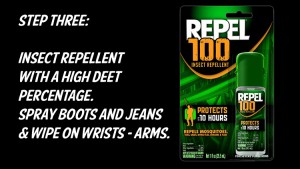 Step Three – Insect Repellent:
Step Three – Insect Repellent:
Repellent is something I always use. The moment I step out of my truck, I grab my high percentage deet insect repellent, and start spraying (I recommend 100% deet). I start at the bottom of my boots, and spray 360 degrees up my jeans to just below my knee. If you feel the repellent through your jeans, you have put on enough. I then spray my wrists, up my arms to just below my elbows. I am careful not to spray my hands, because the deet can dissolve rubber parts on my binoculars, rangefinders, scopes and other equipment. This is added protection to the barriers in place, especially down on my legs and feet.
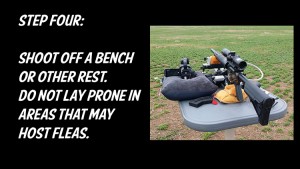 Step Four – Shooting Bench or Rest:
Step Four – Shooting Bench or Rest:
Whenever I am shooting in areas where there are varmints (which equals fleas), I make a point to shoot off a shooting bench, or another type of rest. I try to avoid any part of me being on the ground, or in the dirt, in these areas, other than my boots. I have layers of protection on my feet and legs, but the moment I lay down in the dirt, I am exposed. I do not recommend you shooting prone in these areas, unless you have a shooting mat, that will protect you from fleas.
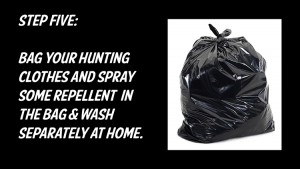 Step Five – Bag Your Hunting Clothes After the Shoot:
Step Five – Bag Your Hunting Clothes After the Shoot:
After I am done shooting, and head back home (or other abode), I immediately go into the bathroom and take all my clothes off. I then put them into a plastic garbage bag, with a couple of shots of insect repellent. I keep my clothes in this bag until they go into the clothes washer. I do not wash any other clothes with my hunting clothes, so any residue left by the repellent will not stain anything else.
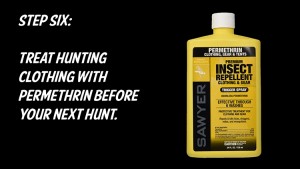 Step Six – After the Wash – Permethrin:
Step Six – After the Wash – Permethrin:
After my hunting clothes are out of the dryer, I spray them down with permethrin. Permethrin is an odorless (after drying) treatment that will kill most insects, but will not stain or damage clothing or fabrics. Read the warnings, because it is toxic when being applied (and to animals). However, it will last a while, so if you are on a hunting trip that is more than just a few days, it will last. It is an extra layer of protection that goes with me the second I leave the door of my house.
Use common-sense. Whenever you field dress, or skin varmints, you should wear rubber, or vinyl, gloves. With varmints that you may pick-up for pictures, or to move out of the area, make sure you use the precautions listed above. Also, if you have any concerns about the animal being healthy, or you see that it is LOADED with fleas, then pass on picking it up. I do it because I show the images in my articles and videos. Another option, which I did not include in the video, is to develop a tool to pick-up your varmints and move them. The VarmintAir Blog has a great article about a small tool he developed to pull prairie dogs out of holes, without having to touch them. Cliff, who runs the VarmintAir Blog, made me one and sent it to me. I use it often now, and it saves me from having to dig around for dead critters.
Be safe and I hope this helped answer some questions, as well as prepare folks for what they need out in the field!
- Podcast with Soul Seekers Nation From the 2025 SHOT Show - February 17, 2025
- Complete Overview of the .17-5.56 KAK Cartridge by KAK Industry - July 21, 2024
- AGM Global Announces New and Upgraded Optics at the 2024 SHOT Show - February 1, 2024

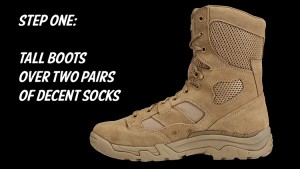
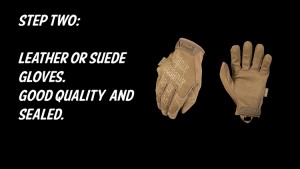
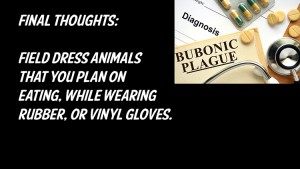
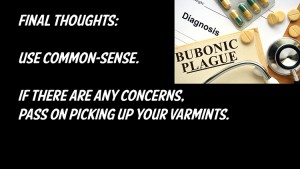
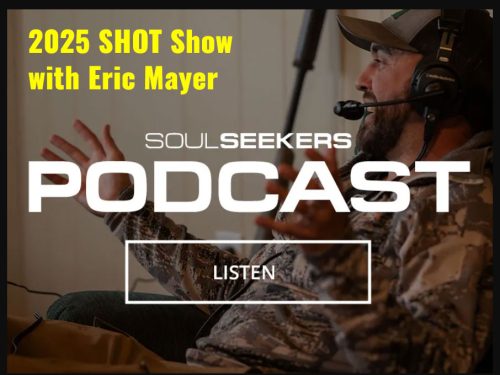
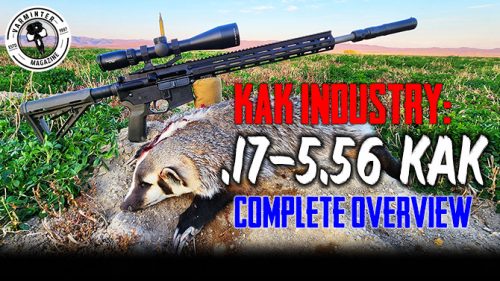
[…] Mechanix Wear – Mechanix is announcing their new “Wolf Grey” colored gloves geared towards law enforcement, and the military, tomorrow. The same low-visibility of this new color, will also be helpful for hunters. I always wear Mechanix Gloves when I am in the field, and even included them in my items that you must have to help prevent catching the Plague. […]
[…] being experimental and possibly not covered by medical insurance. Transmission | Plague | CDC Varmint Hunting and Catching the Plague I think the white Tyvek suit stunt is sort of inane – it might be cute but is not complete enough […]